Accepted Scientific Name: Rabiea albinota (Haw.) N.E.Br.
Gard. Chron. 1931, Ser. III. lxxxix. 53.
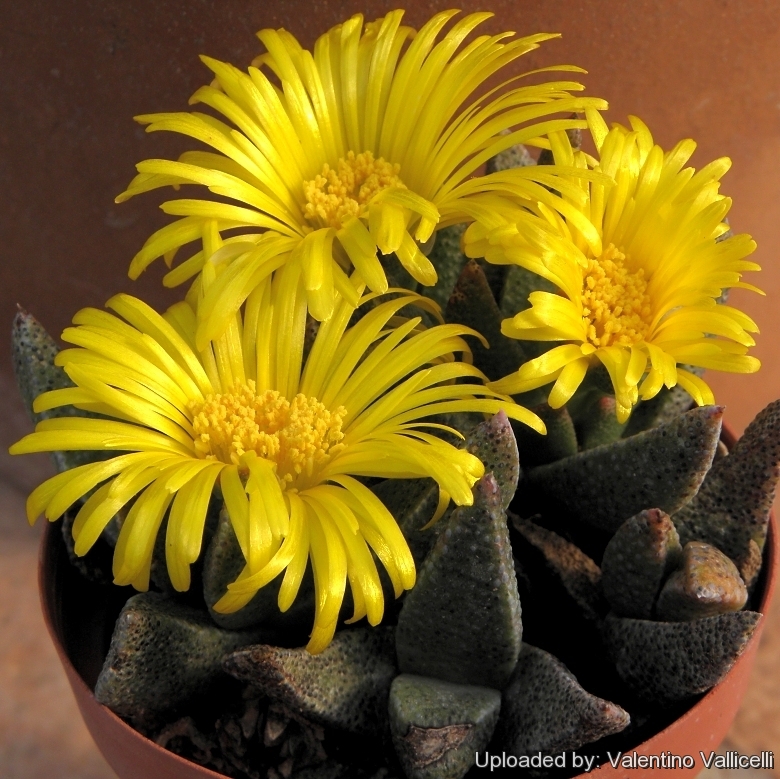
Aloinopsis albinotus (Rabiea albinota) Photo by: Valentino Vallicelli
Will form nice compact tuft, great for small pots. Rabiea is a strongly hardy plant recommended for beginners, can grow outdoor in the rock garden and tolerates severe frost in winter.
Origin and Habitat: Cape Province: Karroo, Free State. South Africa.
Habitat: Dry open places among rocks on slopes, often in crevices between stones, rainfall mainly in summer (but not only). In fact the plants in habitat shows different growth phases and their appearance can change throughout the year and under different growing conditions. This is one of the reasons why identification in the past proved to be troublesome.
Ecology: The mechanism of seed dispersal is through a higrochastic fruit and the seed is only dispersed in the immediate environment, which results in local small communities.
Synonyms:
Description: Rabiea albinotaSN|19625]]SN|19625]] is a dwarf, multi-branching, mat-forming succulent species.
Stem: Almost stemless.
Rosettes: Small, compact, Aloe-like each composed of 4-5 cm pairs of leaves.
Roors: Deep, thick and fleshy. In the younger specimen is present only a central tap-root while the older plants will develop a thick, conspicuous, rhizome or rootstock.
Leaves: Dark green 40-50 mm long, 10-12 mm wide at the broader part, very succulent, firm, spreading diagonally at most (Often erected under dry conditions), opposite, often slightly differing in size, sickle-shaped, triangular in cross-section, upper surface broadening from the base to above the middle, then tappering to a pointed, mucronate apex, the lower leaf surface acinaciform from a broader base, with a distinct keel, epidermis with numerous tuberculate, prominent, white to dark-purplish dots, often white margined.
Flowers: Daisy-like, yellow, solitary, opening in the afternoon, 4-4,5 cm in diameter, stamens yellow. Pedicel, short with basal bracteoles.
Blooming season: Mainly from late winter through spring but it may flowers occasionally all year round.
Fruit: Breaking off the short and fragile stalk when ripe, base funnel to bell-shaped, top conical/rounded.
Notes: Several species names are confused and partly redundant (Rabiea albinotaSN|13451]]SN|19625]] for plants with thick low leaves, Rabiea albipunctaSN|19625]]SN|13451]] for those with thinner ± erect leaves) seem to cover most of the forms. Some wild individuals of both species are densely covered with very striking white spots.
Bibliography: References and further reading
1) Oliver, I.B. “Grow succulents.” Kirstenbosch Gardening Series. National Botanical Institute, Cape Town.
2) Smith, G.F., Chesselet, P., Van Jaarsveld, E.J., Hartmann, H., Hammer, S., Van Wyk, B-E., Burgoyne, P., Klak, C. & Hubert, K. “Mesembs of the world.” National Botanical Institute, Pretoria.1998.
3) Doreen Court “Succulent Flora of Southern Africa” CRC Press, 01/giu/2000
4) James Cullen, Sabina G. Knees, H. Suzanne Cubey “The European Garden Flora Flowering Plants: A Manual for the Identification of Plants Cultivated in Europe, Both Out-of-Doors and Under Glass - Casuarinaceae to Aristolochiaceae” Cambridge University Press, 11/ago/2011
5) Hermann Jacobsen, Vera Higgins “Succulent Plants: Description, Cultivation and Uses of Succulent Plants, Other Than Cacti” Williams and Norgate, Limited, 1935
7) Jacobsen. “Handbook of succulent plants” 1328 (1960)
9) H. Herre “The genera of the Mesembryanthemaceae” Tafelberg-Uitgewers Beperk, 1971
10) Gideon Smith u.a. (Hrsg.): “Mesembs of the World: Illustrated Guide to a Remarkable Succulent Group.” Briza Publications, 1998
11) Nicholas Edward Brown “Mesembryanthemum and allied genera.” In: Journal of Botany, British and Foreign. Volume 66:171 1928
12) Burgoyne, P.M. 2006. Rabiea albinota (Haw.) N.E.Br. National Assessment: "Red List of South African Plants" version 2013.1. Accessed on 2014/02/02
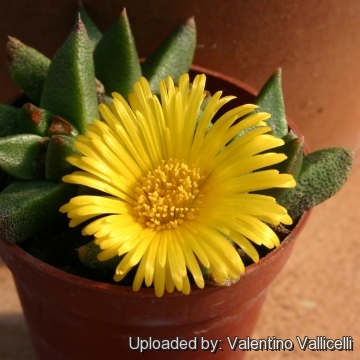 Aloinopsis albinotus (Rabiea albinota) Photo by: Valentino Vallicelli
Aloinopsis albinotus (Rabiea albinota) Photo by: Valentino Vallicelli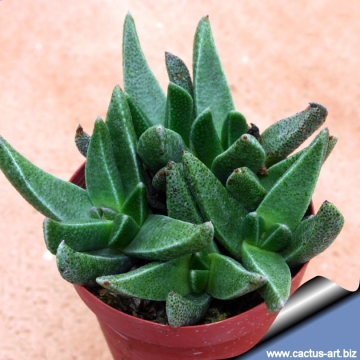 Aloinopsis albinotus (Rabiea albinota) Photo by: Cactus Art
Aloinopsis albinotus (Rabiea albinota) Photo by: Cactus Art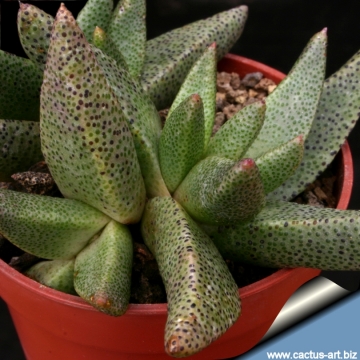 Aloinopsis albinotus (Rabiea albinota) Photo by: Cactus Art
Aloinopsis albinotus (Rabiea albinota) Photo by: Cactus Art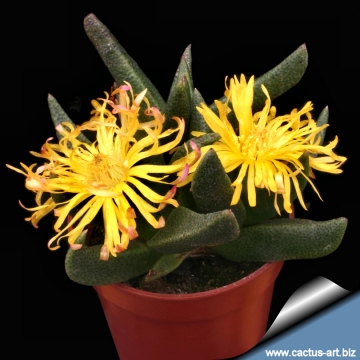 Aloinopsis albinotus (Rabiea albinota) Photo by: Cactus Art
Aloinopsis albinotus (Rabiea albinota) Photo by: Cactus Art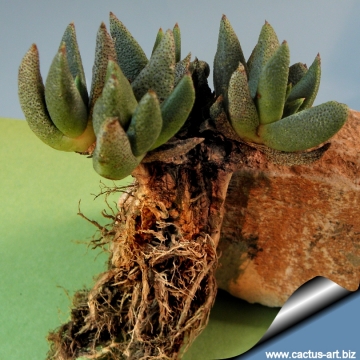 Aloinopsis albinotus (Rabiea albinota) Photo by: Cactus Art
Aloinopsis albinotus (Rabiea albinota) Photo by: Cactus Art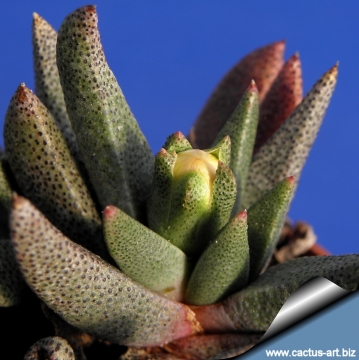 Aloinopsis albinotus (Rabiea albinota) Photo by: Cactus Art
Aloinopsis albinotus (Rabiea albinota) Photo by: Cactus Art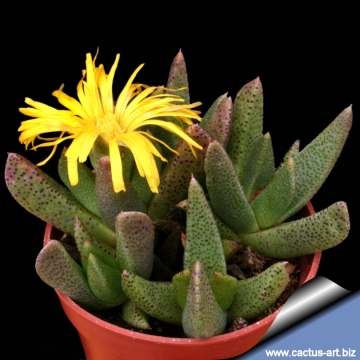 Aloinopsis albinotus (Rabiea albinota) Photo by: Cactus Art
Aloinopsis albinotus (Rabiea albinota) Photo by: Cactus ArtSend a photo of this plant.The gallery now contains thousands of pictures, however it is possible to do even more. We are, of course, seeking photos of species not yet shown in the gallery but not only that, we are also looking for better pictures than those already present.
Read More... Cultivation and Propagation: Rabiea are easy and rewarding plants than can be grown in pots or in the rock-garden. They can be watered year-round, water regularly from spring to Autumn but reduce watering frequency in winter, growth period is early Spring to late Summer, but is a very adaptable species that can grows opportunistically whenever the water availability and growing condition are favourable. Keep them cool, and half-shaded in summer, need full sun or light shade on the other seasons. Potted rabieas look best in a heavy soil and the same is true for plants in a rockery. Requires good drainage.
Frost Tolerance: Very frost hardy and grows best where there are cold winters (it is reported to be hardy to at least -18° C if very dry). It is difficult to keep the leaves free of scars and dead leaf-tips, but the abundant flowers hide them.
Propagation: Cuttings or (rarely) seeds
Remarks:Rabiea albinotaSN|19625]]SN|19625]] has a gorgeous, thick root system and when it is potted up, the plant can be progressively raised over the ground so that some of the roots can be seen and is especially cultivated for their looks. Architecturally it is a real stunner. When the "caudex" shape of the raised roots is adequately in evidence this plant is incomparable. They also tend to grow more "heads" when they are raised.
Traditional uses: Rabiea albinotaSN|19625]]SN|19625]] is a mildly hallucinogenic plant with effects similar to those of Sceletium. It is known by a number of south African tribesmen (especially the Griquas) with the name "S'Keng-Keng" . The Griquas were known to dry and pulverize the whole plant to use it as a snuff, or to add it to tobacco and smoked to cause state of euphoria.
Reported hallucinogenic effects have not been established under laboratory conditions; however this attribute may be the result of confusion between Sceletium and the similar looking genus Rabiea. A chemical analysis of Rabiea albinota has yet to be accomplished.


















